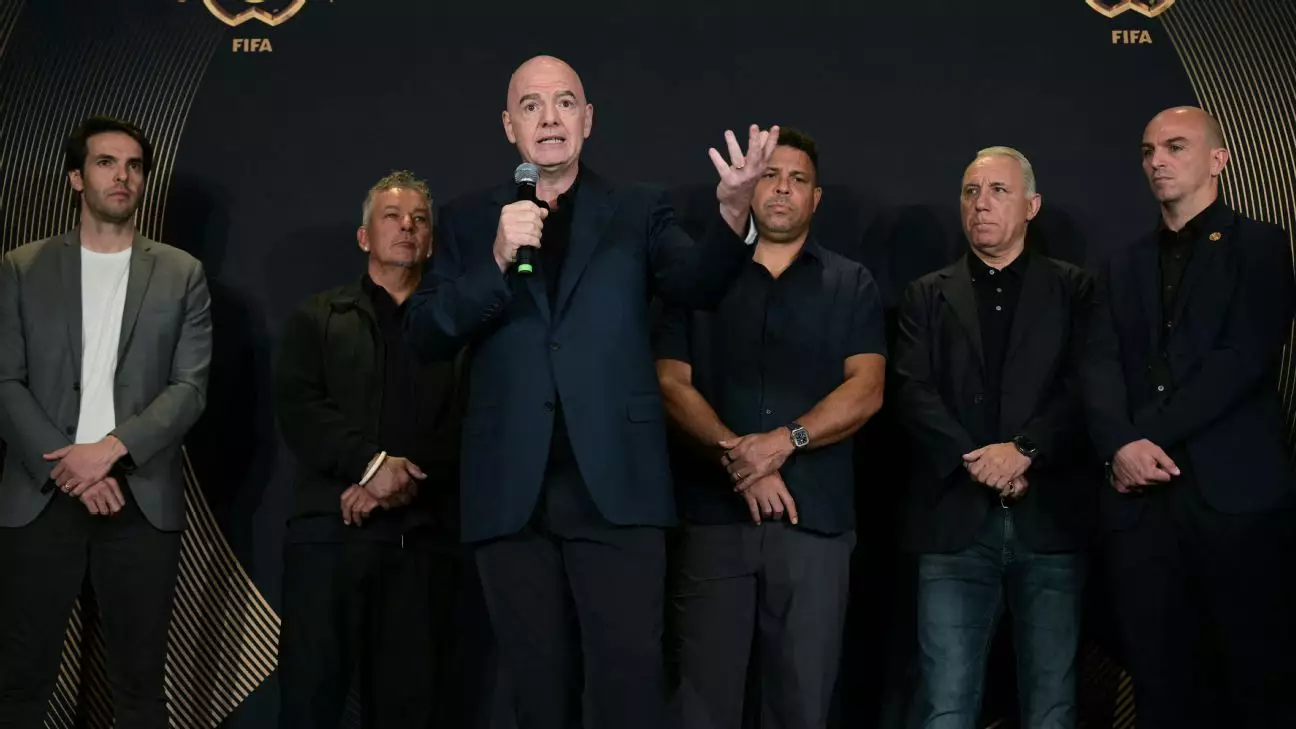As the world grapples with escalating climate uncertainties, major sporting events such as the FIFA World Cup are increasingly under scrutiny for their environmental health and athlete safety. The recent emphasis by FIFA President Gianni Infantino on utilizing stadiums with roofs and climate-controlled environments signals a significant step forward. While fans enjoy the spectacle, the reality remains that extreme heat and unpredictable thunderstorms threaten both the integrity of players’ health and the quality of competition. It is no longer enough to rely solely on traditional open-air venues; instead, the future must be aligned with innovative infrastructure solutions that prioritize safety and sustainability.
The deployment of covered stadiums with integrated air conditioning offers a pragmatic response to heatstroke risks and disrupted matches. Cities like Atlanta, Dallas, Houston, and Vancouver, which have invested in such facilities, exemplify how modern architecture can serve sports without compromising gameplay. These developments signal a shift toward resilient sports infrastructure that can withstand climate variances, ensuring that the world’s premier football tournaments remain vibrant and secure regardless of weather patterns. Embracing these technological advancements not only benefits players and spectators but also sets a precedent for environmentally conscious sports management, bringing the discipline in line with global sustainability ambitions.
Redefining Tournament Scheduling for Player Well-being
Criticism from players, unions, and coaching staff underscores the urgent need to rethink how international competitions are scheduled. Enzo Fernández’s candid remarks about feeling “dizzy” due to soaring temperatures during the Club World Cup emphasize the importance of prioritizing athlete health over traditional scheduling paradigms. The current format, often scheduled during peak daytime hours, exposes players to potentially dangerous conditions, undermining the integrity of the sport and risking long-term health consequences for athletes.
Adjusting match timings, incorporating more frequent cooling breaks, and leveraging climate data to plan competitions smarter are crucial strategies moving forward. FIFA’s acknowledgment of these issues suggests a willingness to evolve, but the onus lies on the governing bodies to implement these changes rigorously. The goal should be to create a游戏 environment that is not only competitive but also safe, recognizing that the sport’s appeal depends heavily on the health and safety of its athletes. This could involve a fundamental overhaul of traditional scheduling methods—potentially moving games to cooler evening hours or designing tournaments that respect environmental constraints without sacrificing excitement.
Countering Criticism with Innovation and Inclusivity
The controversy surrounding the expanded Club World Cup—especially the decision to stage a summer tournament with 32 teams—raises questions about the balance between commercial interests, competitive fairness, and athlete welfare. Some European teams expressed frustration over not qualifying, seeking direct invitations, illustrating a tension between traditional qualification systems and new logistical models seeking global inclusivity. Nonetheless, Infantino’s assertions highlight the importance of continuous evolution in tournament structures, viewing criticism as an opportunity for refinement.
In a broader perspective, FIFA’s commitment to future innovations—such as considering more diverse qualification pathways and accommodating various regional needs—signals a sport that is receptive to change. The acknowledgment of criticism coupled with a proactive stance fosters a culture of transparency and adaptability. It reveals a governing body that recognizes the importance of aligning tournament designs with the realities of climate change, global fan engagement, and evolving player expectations. Embracing these challenges with bold solutions can propel soccer into a new era—one characterized not only by entertainment but also by resilience and inclusivity.
Leadership with a Vision for a Sustainable Future
Gianni Infantino’s leadership style, emphasizing growth, innovation, and responsiveness, positions FIFA as a pivotal institution shaping the future of international football. His recognition of climate challenges and willingness to incorporate architectural and scheduling innovations demonstrate a forward-thinking approach. The anticipated presence of key figures like President Donald Trump at upcoming finals indicates how sports can serve as a diplomatic and cultural bridge, fostering dialogue and unity amidst global tensions.
Yet, such leadership must also confront the stark realities of environmental crises and athlete safety with unwavering commitment. The ongoing dialogue—that of learning from experience, implementing technology, and embracing adaptability—is what will define the next chapter of global football. The true test lies in translating these visionary concepts into tangible, everyday realities that prioritize human health and sustainability without diluting the sport’s passion and excitement.
By reimagining how matches are played, where they are hosted, and how tournaments are structured, FIFA has the potential to set new standards for sports organizations worldwide. Infantino’s tenure, with its emphasis on innovative solutions and openness to criticism, exemplifies a leadership style poised to steer global football toward a more responsible and resilient future. The challenge—and opportunity—lies in transforming these visions into action that sustains the sport’s soul while safeguarding the planet for generations to come.

